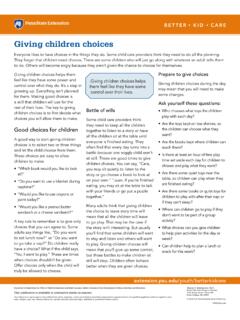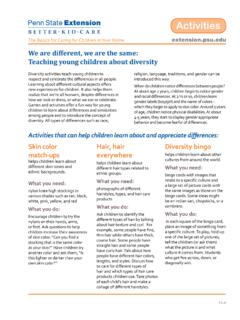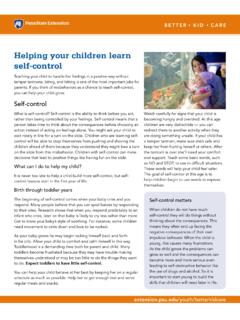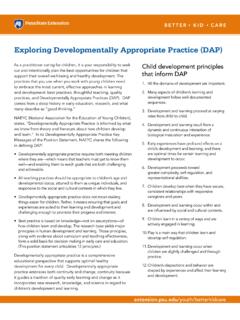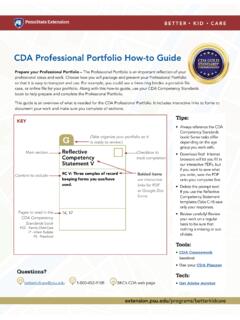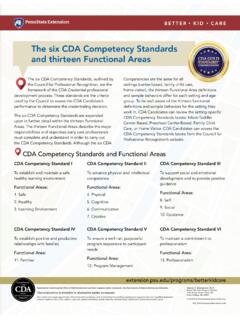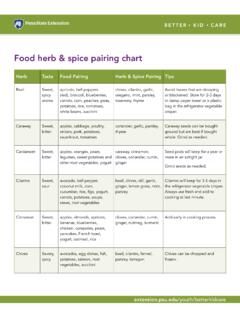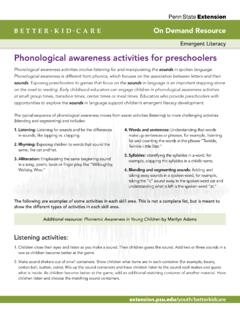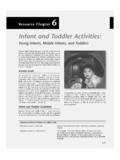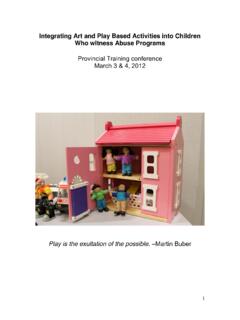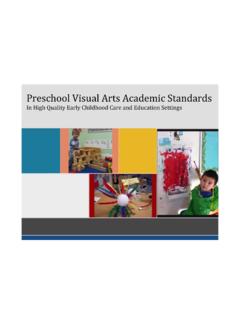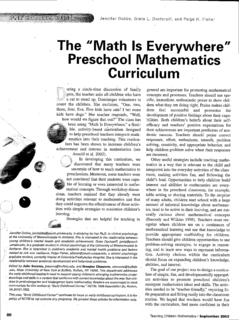Transcription of Art – an opportunity to develop children’s skills
1 Art an opportunity to develop children s skillsAs young children explore paint by putting it all over their hands, or create collages with torn paper, it s noticeable how involved they get in their activities. children delight in exploring and creating with art materials. These art experiences help children develop many life skills . As young children explore paint by putting it all over their hands, or create collages with torn paper, it s noticeable how involved they get in their activities. children delight in exploring and creating with art materials. These art experiences help children develop many life is important for children especially during their early development. Research shows that art activities develop brain capacity in early childhood.
2 Art engages children s senses in open-ended play and supports the development of cognitive, social-emotional and multisensory skills . As children progress into elementary school and beyond, art continues to provide opportunities for brain development, mastery, self-esteem and creativityCreativity is expressing one s own idea, trying new things, and experimenting with changing materials. The best way to develop creativity is to provide a variety of materials, and give children time to create on their own. Another way to support children s creativity is to simply observe while they work, to provide additional supplies when needed, and to allow the child to decide when the work is children to try a new art experience.
3 Asking open-ended questions, such as What do you think you can do with the yarn? can help children think about what process or creation might be activities for children also introduce them to new tools and materials, and possible ways to use them. Then the children can decide what to create and how they want to do helps to develop cognitive skillsAs children draw, paint , and make collages, they are learning about the world (color, shape and size of objects). When they use paints, glue, and markers, children are planning, experimenting, and problem solving. As children mix paint , they learn to understand cause and effect. Art gives children chances to make decisions, and to learn from the experience of making choices about their art offers opportunities for self-expressionChildren express how they feel and think about the world through their art, which gives them a way to express the feelings and ideas that they don t have the words to talk about.
4 This way of expressing themselves helps children to cope with the natural stresses of growing up. Art helps children to develop a sense of their own individuality, a sense of self-respect, and an appreciation for others develops physical skillsAs children use scissors to cut, fingers to finger paint , or weave yarn with fingers, they are improving control of the small muscles in their hands. Along with drawing with crayons or markers, this helps children develop fine motor control that they need later for is a process not a productWhere art is concerned, it is the process of creating exploring, discovering, and experimenting that has the greatest value for young children . The process is what s most important, not the thing they actually create.
5 Learning takes place even when children do not make a finished product to take home at the end of the day. Sometimes when children are asked to focus on an end result, or to finish something, it can limit the type of learning that can take place. Through self-expression and creativity, children s skills will develop with children about their art workTalking about art is a great way for children to develop their language skills , as they talk about color, shape, and size while describing their work to friends, caregivers, and parents. Adults can: Ask children open-ended questions Tell me about your picture! Write down what the child says about her work. Read the words back to the child to give her a chance to add more detail.
6 Putting children s words into writing shows respect for the child s thinking and help others to understand her work. Give children art vocabulary Talk about lines (straight, curvy, rounded, wavy, etc.) and colors (traffic light red, sky blue, grass green). Describe what the art looks like, and then let the child tell you about his work You made long lines on your picture. This is a good way to get a child to talk about his work. Ask children about the process How did you get the tissue paper to look like that? or How did you mix the paint to make that color? Encourage the child to talk about the process. Every child is an artist. The problem is how to remain an artist once he grows up.
7 Pablo by funds from the Office of Child Development and Early Learning, jointly overseen by the Departments of Human Services and publication is available in alternative media on State is an equal opportunity , affirmative action employer, and is committed to providing employment opportunities to all qualified applicants without regard to race, color, religion, age, sex, sexual orientation, gender identity, national origin, disability or protected veteran C. Mincemoyer, , Better Kid Care Program Director 2182 Sandy Drive Suite 204 State College, PA 16803 2016 The Pennsylvania State University
